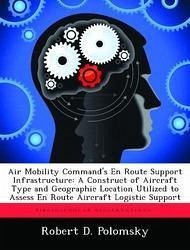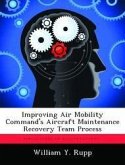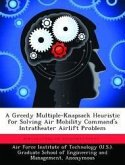The ability of the United States Armed Forces to maintain a global presence and rapidly project military power anywhere in the world are key factors in preserving our freedom. To accomplish the demanding task of global reach support, Air Mobility Command employs an en route support infrastructure. These en route locations provide varying levels of command, control, and communications (C3), logistics support, and aerial port functions. The goal of the en route is to minimize delays for AMC mission aircraft. However, these en route locations comprise a small percentage of the locations that AMC aircraft visit. Given the critical demand for rapid air mobility, potential impact of mission delays or cancellations, and the substantial investment of taxpayer dollars, AMC must provide logistical support to off-station aircraft in the most effective manner possible. This research examined a 5-year historical summary of AMC's logistical support process. The resulting data was used to perform a statistical analysis of AMC off-station aircraft logistic support records for AMC's six primary aircraft fleets (C-5, C-17, C-141, C-130, KC-10, and KC-135). The calculated average not mission capable (NMC) time was used to compare overseas en route and non en route locations to assess AMC's en route infrastructure's effectiveness in reducing mission delays due to aircraft maintenance problems. Effectiveness, in the context of this research, was measured in terms of a lower or shorter average NMC time, equating to reduced mission delays. The initial data analysis on OCONUS en route and non en route locations provided a macro level assessment based on location only. A closer investigation on iv each of the six primary AMC aircraft fleets returned varying results in terms of reduced averaged NMC time.
Hinweis: Dieser Artikel kann nur an eine deutsche Lieferadresse ausgeliefert werden.
Hinweis: Dieser Artikel kann nur an eine deutsche Lieferadresse ausgeliefert werden.








